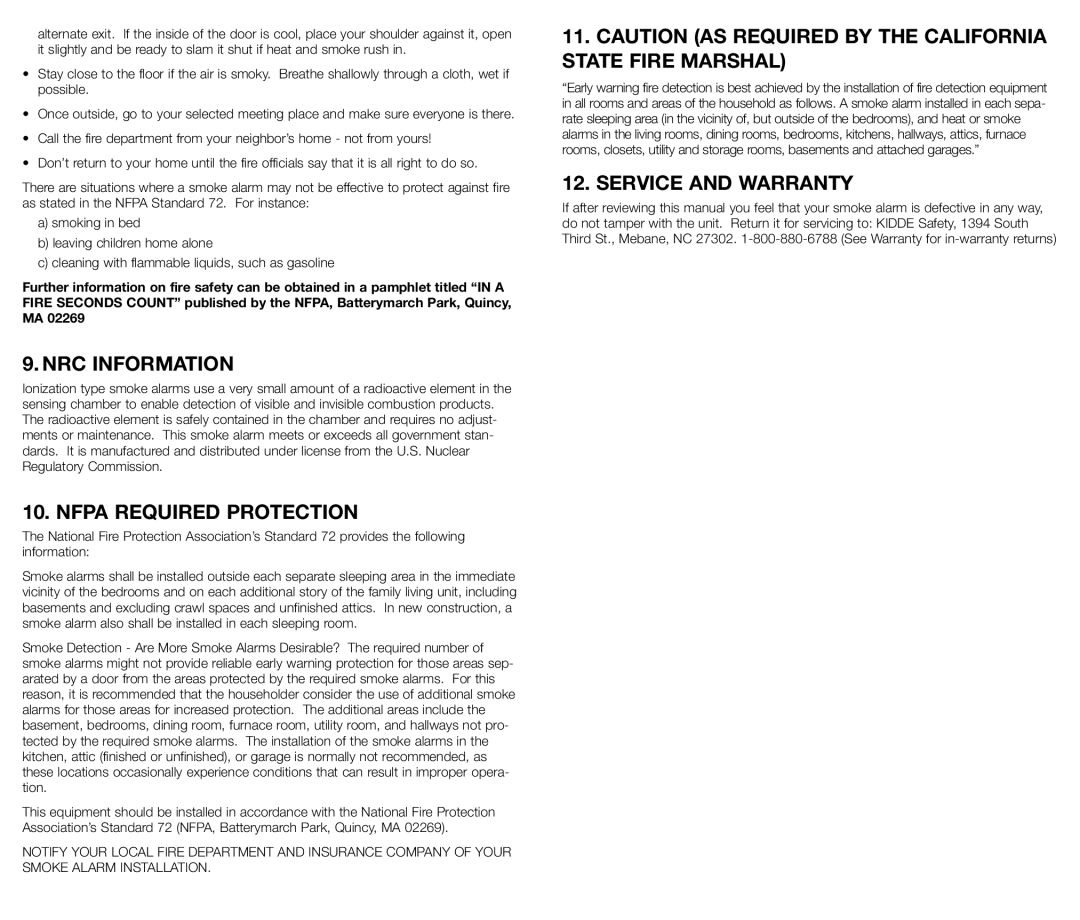0914 specifications
The Kidde 0914 is a highly regarded smoke alarm that combines functionality, reliability, and convenience, making it an essential device for home safety. Designed with user-friendly technology, the Kidde 0914 is a battery-operated smoke detector that provides early warning of potential fire hazards, ensuring peace of mind for homeowners and their families.One of the standout features of the Kidde 0914 is its advanced photoelectric sensing technology. This technology is designed to detect slow-smoldering fires that are often produced by common household items such as furniture or bedding. Unlike traditional ionization smoke alarms, which are more effective at detecting fast-flaming fires, the photoelectric sensor reduces the likelihood of false alarms caused by cooking smoke or steam, thus improving overall reliability.
The Kidde 0914 is equipped with a loud, 85-decibel alarm that can alert occupants of the home effectively, even during sleep. The unit also includes a test/reset button, allowing users to easily verify alarm functionality and reset it if necessary. Another convenient feature is theindicator light that signals the unit's operational status, providing visual confirmation that the smoke alarm is working properly.
In terms of installation, the Kidde 0914 is user-friendly. It can be mounted on walls or ceilings with minimal effort, and the battery operation means there are no cumbersome wires to deal with. The product typically uses a standard 9V battery, making replacements straightforward and accessible.
The design of the Kidde 0914 is compact and unobtrusive, making it suitable for any room without being visually intrusive. This smoke detector is also lightweight, making it easier to install than heavier alternatives.
Safety is further enhanced by the Kidde brand's commitment to quality and innovation, backed by years of experience in fire safety solutions. The Kidde 0914 adheres to stringent safety standards, ensuring it meets the necessary requirements for effective fire detection.
In conclusion, the Kidde 0914 smoke alarm stands out for its photoelectric technology, user-friendly design, and reliability. It is an excellent choice for ensuring the safety of your home while delivering essential features that help reduce false alarms and provide early warning in case of fire. Prioritizing fire safety has never been easier with the dependable performance of the Kidde 0914.
